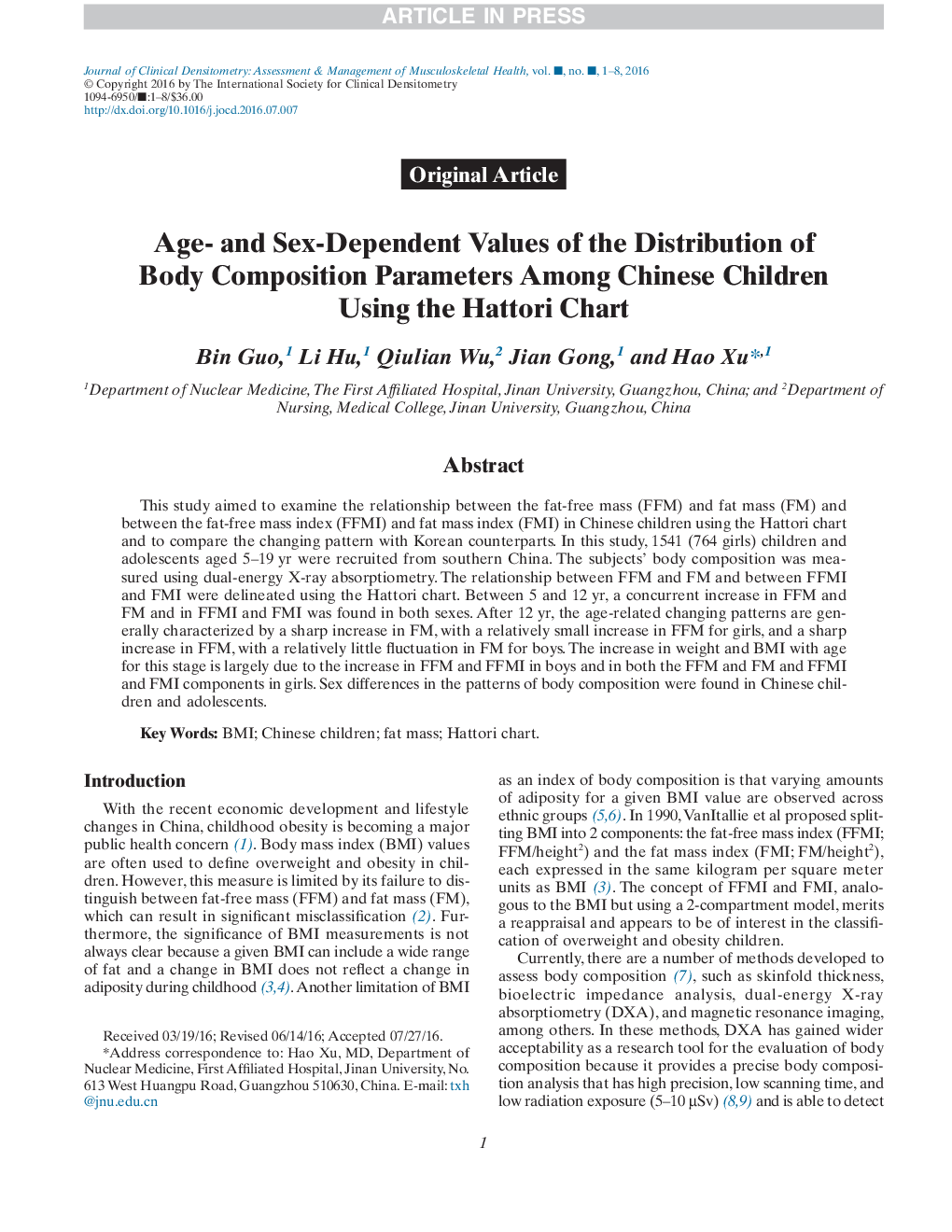| Article ID | Journal | Published Year | Pages | File Type |
|---|---|---|---|---|
| 8723143 | Journal of Clinical Densitometry | 2017 | 8 Pages |
Abstract
This study aimed to examine the relationship between the fat-free mass (FFM) and fat mass (FM) and between the fat-free mass index (FFMI) and fat mass index (FMI) in Chinese children using the Hattori chart and to compare the changing pattern with Korean counterparts. In this study, 1541 (764 girls) children and adolescents aged 5-19âyr were recruited from southern China. The subjects' body composition was measured using dual-energy X-ray absorptiometry. The relationship between FFM and FM and between FFMI and FMI were delineated using the Hattori chart. Between 5 and 12âyr, a concurrent increase in FFM and FM and in FFMI and FMI was found in both sexes. After 12âyr, the age-related changing patterns are generally characterized by a sharp increase in FM, with a relatively small increase in FFM for girls, and a sharp increase in FFM, with a relatively little fluctuation in FM for boys. The increase in weight and BMI with age for this stage is largely due to the increase in FFM and FFMI in boys and in both the FFM and FM and FFMI and FMI components in girls. Sex differences in the patterns of body composition were found in Chinese children and adolescents.
Keywords
Related Topics
Health Sciences
Medicine and Dentistry
Endocrinology, Diabetes and Metabolism
Authors
Bin Guo, Li Hu, Qiulian Wu, Jian Gong, Hao Xu,
